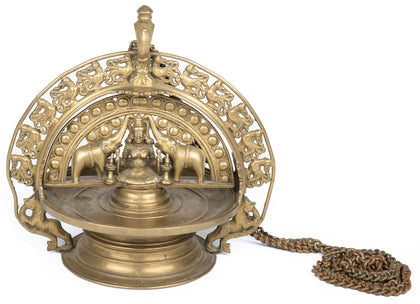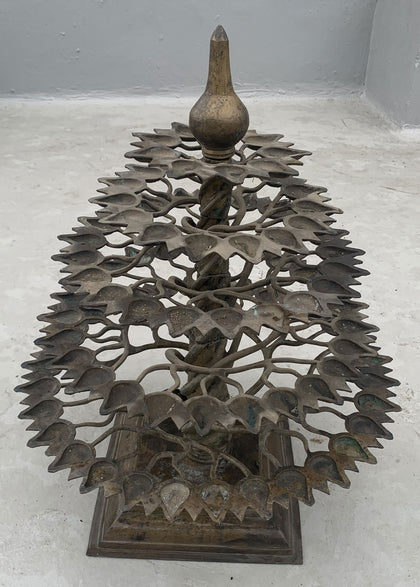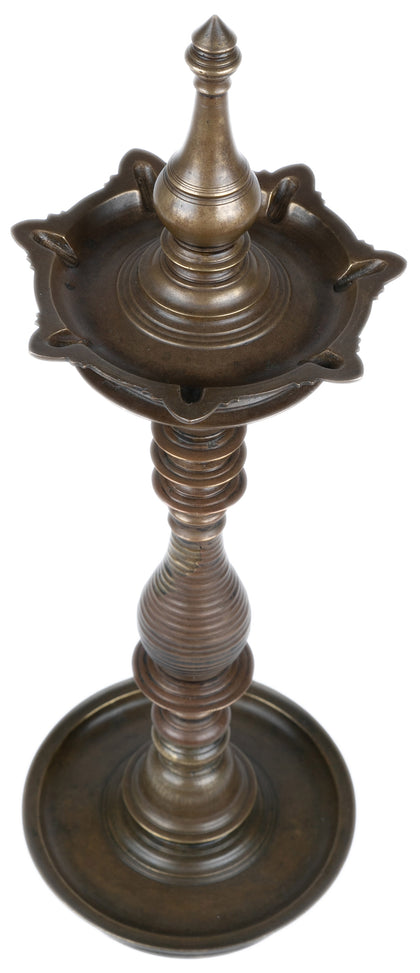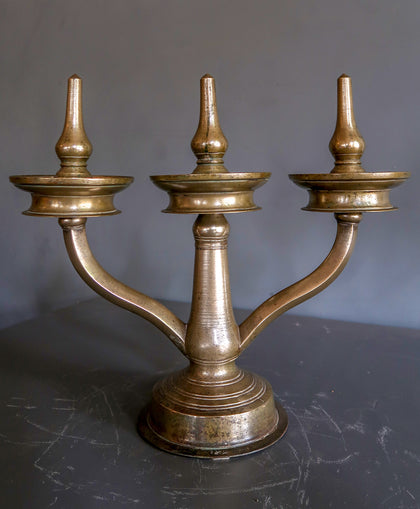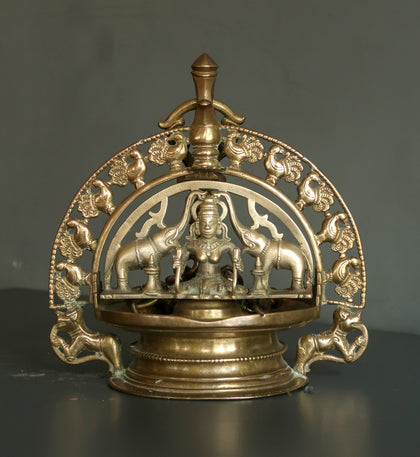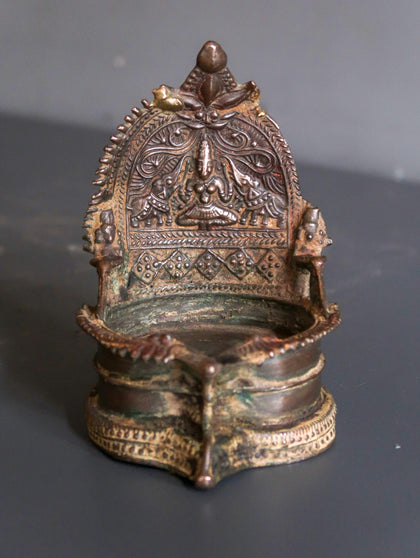Description
This is a large, lost-wax cast bronze, kalpavriksha (tree of life), oil lamp from Kerala. Kalpavriksha, also known as kalpataru, kalpadruma, kalpapadapa or karpaga vriksham, is a wish-fulfilling divine tree in Hinduism, Jainism, Buddhism, and Sikhism. Kalpavriksha, the tree of life, also meaning "world tree", is mentioned in Vedic scriptures at the "churning of the ocean of milk" where it emerged from the primal waters. The king of the gods, Indra returned with this Kalpavriksha to his abode in paradise and planted it there. At the top of the lamp is a stylised Kalasam finial. The Kalasam (or kalasha) is considered a symbol of abundance and "source of life" in the Vedas. The Kalasam is believed to contain amrita, the elixir of life, and is viewed as a symbol of abundance, wisdom, and immortality. Below this are five layers that come out from the stem as twisting branches that fan out into a circle with leaf like oil wells and spouts for wicks at the outer edge. In total, there are 105 of these! The base is a bronze, square, raised platform.
The ancient art of lost-wax casting dates back nearly 6000 years in India. First, an artist creates an original model from wax. Everything is then encased with layers of clay, thus becoming a mould for the molten metal that will be poured inside it. When this is poured in, the wax melts and the original is lost. Once the metal hardens, the outer layer of clay is smashed, which is what makes each piece unique.



















































































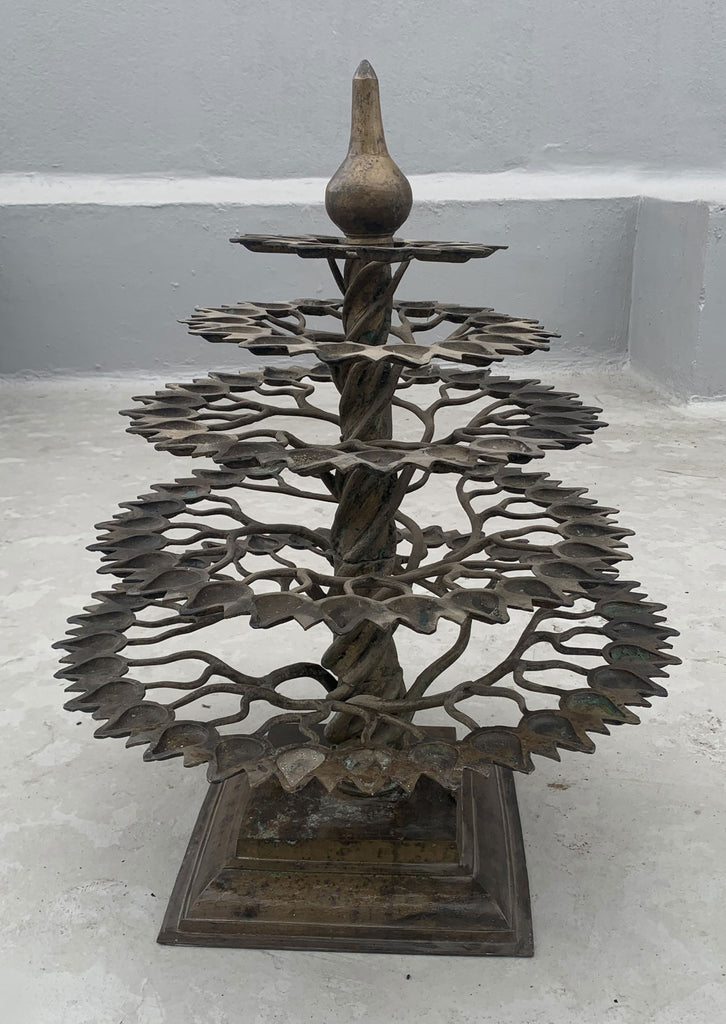
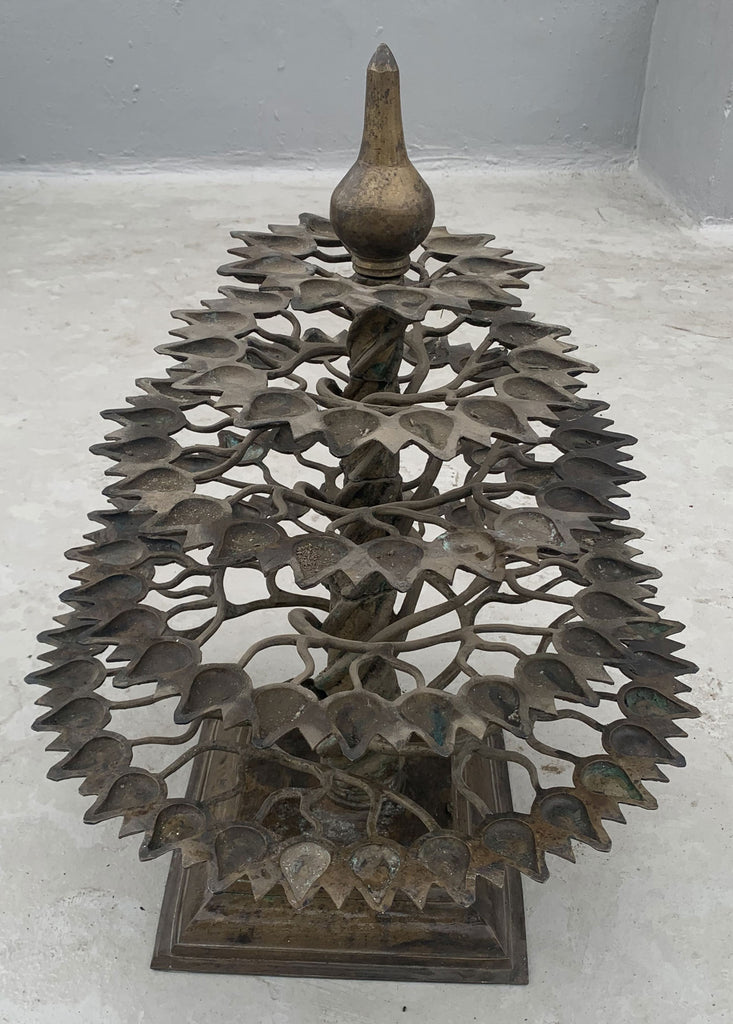


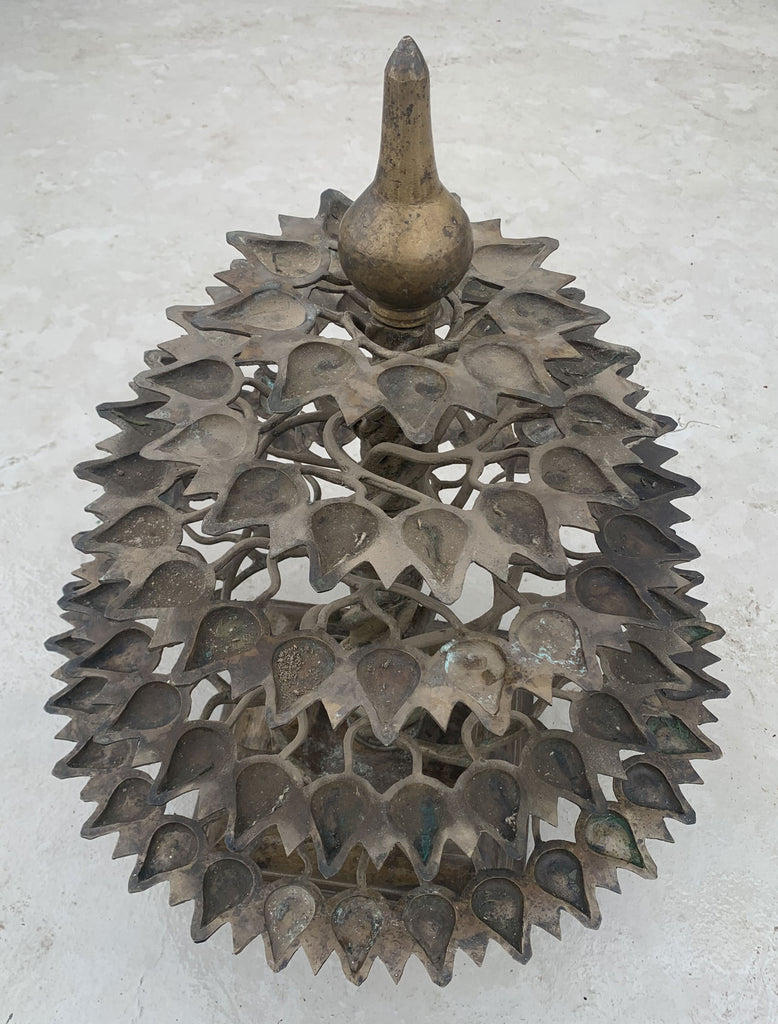


 View Full Screen
View Full Screen









